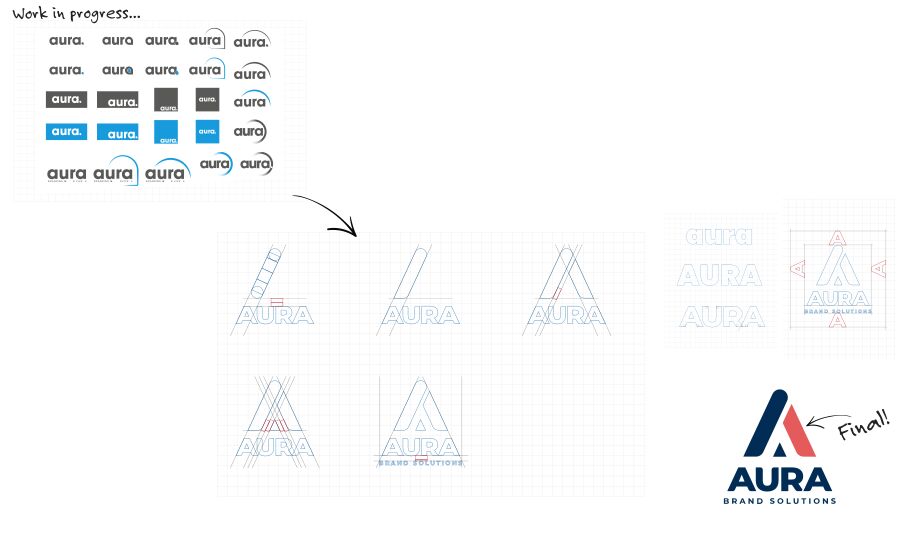
Things to consider before rebranding
August 13, 2024
Is your brand looking tired or outdated? If the answer is yes, it's time for a change. And by change, we mean a rebrand. Or, at the very least, a brand refresh. In which case, the following information is for you!
Rebranding is a significant step for any business, signalling growth, evolution, and a renewed commitment to your customers. There are several key factors to consider before diving into a rebrand, and we've outlined them below. Use this as your blueprint, and you'll be well on your way to a very successful transformation!
Understand your goals
Before starting a rebrand, defining what you want to achieve is crucial.
Are you aiming to:
- Modernise your brand’s appearance?
- Reflect a change in company values or direction?
- Improve customer engagement?
- Differentiate from competitors?
Having clear goals will guide your rebranding strategy and ensure all efforts align with your desired outcomes.
Know your audience
Understanding your target audience is essential. Conduct market research to gather insights on customer preferences, behaviours, and perceptions. You could do this with polls or feedback forms via email, social media, analytics and observations. This data will help shape your new brand identity in a way that resonates with your audience and meets their expectations.
Evaluate your current brand
Take a comprehensive look at your existing brand with your goals in mind. Identify what works well and what doesn’t. This evaluation should include:
- Visual elements (logos, colours, fonts)
- Brand messaging and tone of voice
- Customer perceptions and feedback
- Competitive analysis
This assessment will provide a foundation for your rebrand, highlighting areas for improvement and elements to retain.
Plan for consistency across all touchpoints
A successful rebrand requires consistency across all customer touchpoints. This includes:
- Website and digital presence: Ensure your website, social media profiles, and digital marketing materials, including email signature, reflect the new brand identity.
- Physical signage and fleet livery: Update all physical representations of your brand, such as interior and exterior signage and vehicle livery. Your fleet should embody your new brand, turning each vehicle into a mobile advertisement that consistently represents your company’s updated image.
Design with longevity in mind
Trends come and go, but a strong brand should endure. While it’s important to be modern, avoid overly trendy elements that may quickly become outdated. Aim for a timeless design that will remain relevant and appealing in the long term.

Communicate internally
A rebrand isn’t just an external change; it’s an internal transformation as well. Ensure that all employees understand and embrace the new brand. Involving them in the implementation and scheduling an unveiling celebration is a great way to help. Provide training and resources to help them represent the brand accurately and enforce it consistently.
Budget and timeline
Rebranding can be resource-intensive, so it’s important to establish a clear budget and realistic timeline. Allocate funds for all aspects of the rebrand, including design, marketing, website updates, and physical materials like signage and fleet livery. Set a timeline that allows for thorough execution without rushing the process or compromising business productivity.
Rollout strategy
Plan a strategic rollout to introduce your new brand to the world. This might include:
- Teaser campaigns to build anticipation
- Launch events, articles and press releases
- Coordinated updates across all platforms and materials
- Customer communication to explain the rebrand and its benefits
A well-executed rollout ensures that your rebrand is received positively and generates excitement among your audience.
Measure success
After launching your rebrand, it’s essential to measure its impact. Track key performance indicators (KPIs) such as customer engagement, brand recognition, and sales metrics. This data will help you assess the effectiveness of the rebrand and make any necessary adjustments.

Rebranding is a complex but rewarding process that can breathe new life into your business. By understanding your goals, knowing your audience, evaluating your current brand, being consistent, and planning carefully, you can navigate the rebranding journey successfully. Don’t forget how important it is to update physical elements like fleet livery and signage to maintain a cohesive brand image. With thoughtful execution, your rebrand can strengthen your market position and resonate deeply with your customers.
Download our rebrand checklist to ensure you’re maximising your rebrand’s effectiveness or get in touch below to chat about how we can help your brand stay relevant and impactful.


